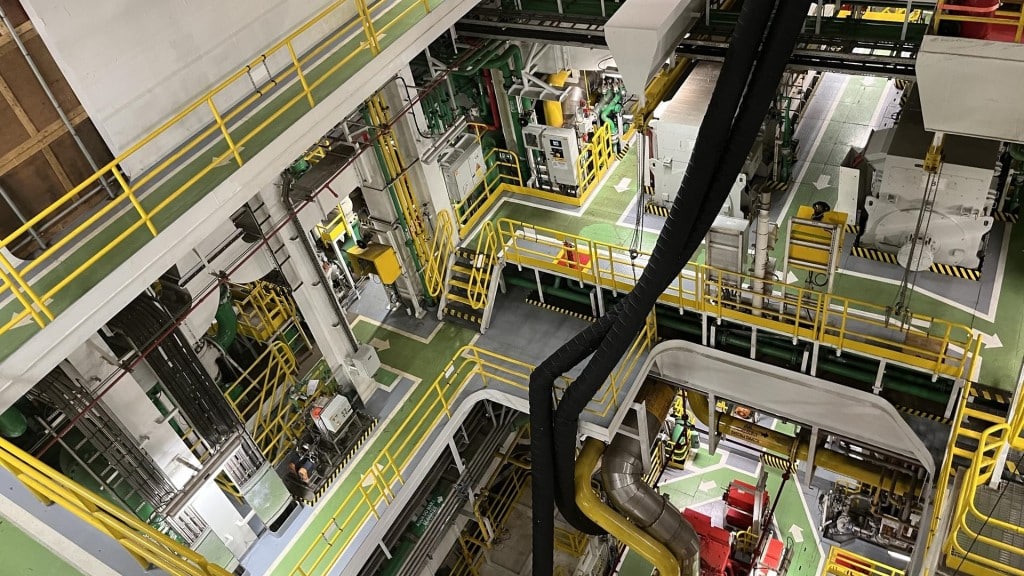Live discharge testing for CO2 fire systems reveals critical safety insights
- November 9, 2023
- 8:00 am


Iain Hoey
Share this content
Global Survival Technology solutions provider Survitec has released the results of pioneering tests conducted on high-pressure CO2 fire extinguishing systems aboard three Floating Production Storage and Offloading (FPSO) vessels.
The tests confirmed the efficacy of live discharge testing in verifying the performance of fire extinguishing systems, beyond theoretical simulations.
Survitec validates live testing forCO2 fire systems
Michal Sadzynski, Product Manager at Survitec, emphasized the findings’ implications: “The important take-home for the industry here is that some of the protected spaces did not pass the tests the first time. T
“his suggests there may be other vessels and offshore structures out there with potentially underperforming CO2 fire extinguishing systems in fire-critical areas such as switchboard rooms, engine rooms, and generator houses.”
Challenges uncovered in live discharge scenarios
Survitec designed a new set of test protocols to align with the latest NFPA12 standard amendments.
These initial tests on the FPSOs covered a range of scenarios, including both moored and docked vessels during conversion.
Sadzynski shared details of the testing process: “The devised live test comes as close as is practical to creating the demands of an actual fire aboard.
“On large vessels like FPSOs, it involves opening hundreds of cylinders – for example, in the engine room of one of these FPSOs, 315 cylinders were released.”
“We have found that the release of large amounts of highly pressurised gas into a partially closed space usually uncovers some engineering challenges within the protected space, rather than with the delivery system itself,” Sadzynski added, detailing the engineering issues that surfaced during testing.
A particular instance of these challenges was witnessed in the switchboard room aboard the first FPSO, where gas-tightness due to the air conditioning system’s specifications led to unforeseen complications during testing.
The pressure increase caused door damage, compromising the room’s integrity and allowing CO2 to escape, which resulted in test failure.
Implementing solutions and acknowledging costs
On another FPSO, leaks within a machinery space led to CO2 concentration drops, highlighting the issue that not all spaces are airtight.
Sadzynski explained the rectifications for such issues: “There are often relatively simple and inexpensive fixes in these scenarios.
“Overpressure in air-conditioned spaces can be resolved by implementing a time delay on one of the fire dampers.
“This allows over-pressurised gas to escape from the space and then closes when the pressure becomes stable, thereby keeping the CO2 concentration at the required level.”
However, he acknowledged the cost implications of live testing, as it exhausts CO2 cylinders which then require refilling, and the need to ensure personnel safety during tests on operational vessels.
Still, the potential cost of unverified systems in an emergency was presented as a much greater risk.
Sadzynski summarised the overarching goal and benefit of the study: “It is important to emphasise that designing a vessel is a highly complex process… This study shows very clearly the limitations of modelling… versus a real-world test.”
He further encouraged the adoption of live testing guidelines to improve the protection of lives and assets and to assist in designing more effective fire suppression systems.
IFSJ Comment
The findings from Survitec’s study highlight an often-overlooked aspect of maritime safety: the reliability of fire extinguishing systems in real-world scenarios.
The fact that not all spaces with CO2 systems passed live discharge testing underscores the necessity for regular and rigorous checks, which goes beyond standard compliance.
It provides a stark reminder that even with advanced modelling techniques, nothing can substitute for the robustness of a live test.
By drawing attention to the need for stringent testing protocols, the study serves as a catalyst for improved safety measures within the industry.
The consequential data derived from such studies are invaluable for both maritime safety experts and engineers in refining fire suppression technology and strategies.

